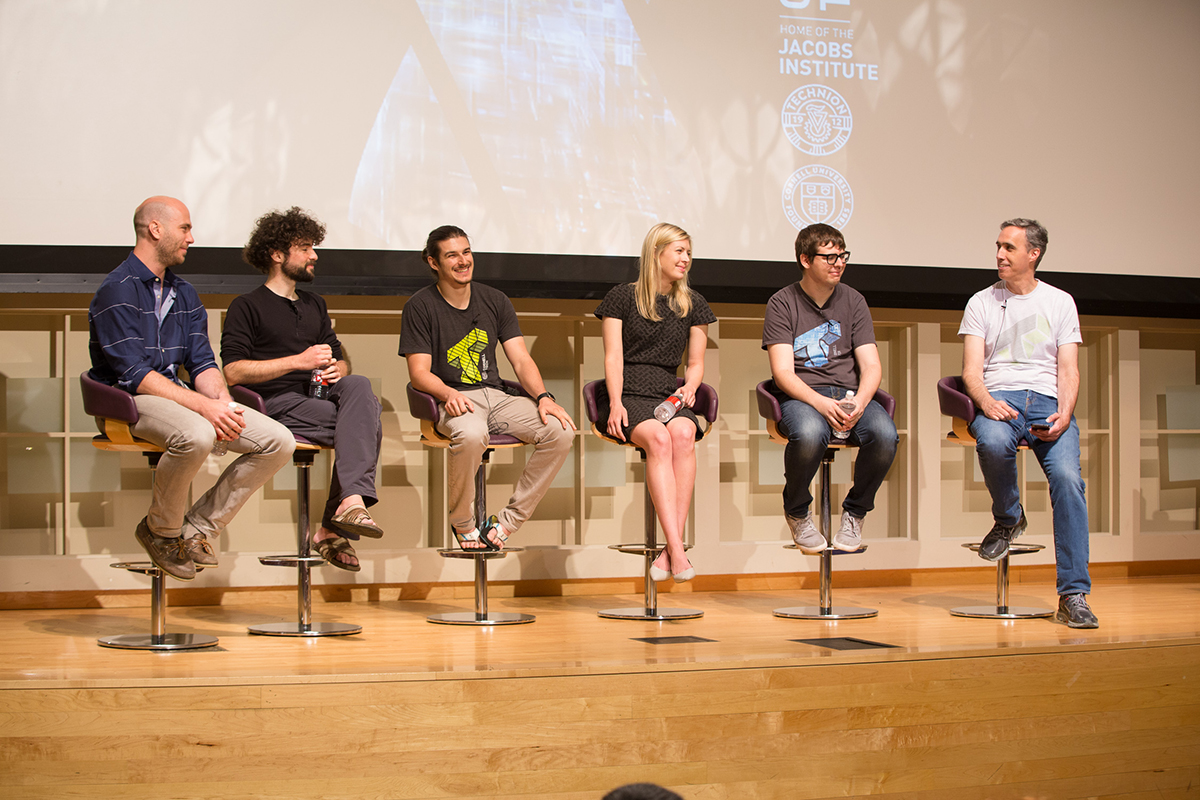Campus charisma emerges through Cornell Tech students
By Blaine Friedlander

Cornell Tech exemplifies a new age in education, and Dan Huttenlocher, vice provost and dean, touted how the new campus’s personality is starting to bloom in New York City.
Speaking to alumni at Reunion June 11, Huttenlocher described the construction of the campus on Roosevelt Island, which will open next year, but he emphasized an emerging, distinctive campus character. Currently, Cornell Tech is housed in the Google building in the Chelsea neighborhood in Manhattan.
“While being small, we’ve developed a real culture on the campus,” said Huttenlocher as he described last month’s Recognition Ceremony for graduates held at The Times Center. “The thing that struck me most about that ceremony, it was in a meeting space in the city that was not part of our campus.”
The founding dean beamed: “And it was Cornell Tech. We’re a tribe. We brought our culture with us. And having been able to create that culture is something that we’re now growing and we’re looking to preserve.”
Huttenlocher said students recognize the power of teams, which play a big role at Cornell Tech. “I look back [to] a year ago and the vast majority of [students on project] teams in the spring were from the same discipline.” This year, students diversified and added individuals with subject strengths to their groups.
“We’re going from an age where things are constrained by capital, by physics of the physical world … but now, capital is not the biggest constraint – it’s creativity,” Huttenlocher said. “We’re moving into a world where building creative and high-impact teams is what’s driving a lot of the advancement and development, so it is very deliberate that we talk about … leadership, along with technology.”
Tech students learn valuable management skills: “It’s not just a technology campus, despite tech being in the name,” he said.
Huttenlocher shared the status of the three buildings under construction: The Bloomberg Center – in honor of Emma and Georgina Bloomberg, the main academic building; The Bridge, the corporate co-location building; and the 26-story residential tower in the shadow of the Queensboro Bridge. All three buildings are scheduled for occupancy by summer 2017. In addition, the Verizon Executive Education Center is planned for 2019, and an adjacent hotel is being considered.
In addition to Huttenlocher’s briefing, freshly minted Cornell Tech students shared their experience, their attraction to the new campus, their reactions to prominent campus visitors and mastering startups.
Tim Delisle, MHA ’15, M.Sc. ’17, said Cornell Tech offered a perfect mix of understanding the health care system and computer science, where he gets an opportunity to solve sticky data problems in health care. “We get to take computer science courses at Cornell Tech, and we take health courses from Weill Cornell Medicine … and we get knowledge from world-class practitioners,” said Delisle, who founded a software company called Datalogue.
Explaining to the alumni that he “wanted to do something with social impact,” Sam Raudabaugh, M.Eng. ’16, explored autism education, and found classroom technology outdated. Together with Greg Brill, MBA ’16, Raudabaugh developed “Thread,” a data collection and sharing platform, designed for teachers of autistic children, who may be overwhelmed by the volume of information collected while observing students. As a central database, the information can be shared with other teachers and parents.
Panelists also included: Emily McAllister ’11, MBA ’15; Brandon Plaster, M.S. ’16; and Rimas Gulbinas, a Runway Startup Postdoc at the Jacobs Technion-Cornell Institute at Cornell Tech and CEO of software company Maalka.
Media Contact
Get Cornell news delivered right to your inbox.
Subscribe